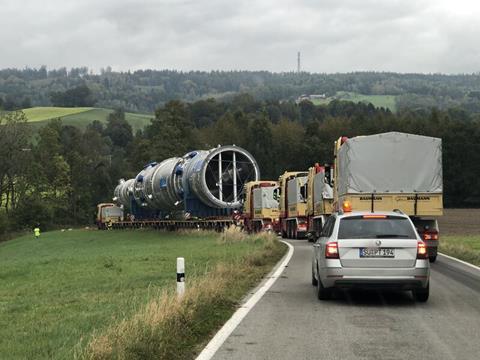Members of the European Parliament have backed moves to harmonise the numerous and complex national rules governing abnormal transport across the European Union (EU).

The plenary vote to revise the EU’s Weights and Dimensions Directive (96/53) is an important step in a long campaign led by ESTA – the European association of abnormal road transport and mobile cranes. The proposals were previously ratified by the Parliament’s Transport and Tourism Committee. Now that they have received the full backing of MEPs, they enter a process of consultation between the Council and the parliament.
ESTA director Ton Klijn said: “European operators transporting indivisible loads face a huge number of different national provisions covering language requirements, the escorting and marking of vehicles, permitting systems and more. These unnecessary and petty rules make the industry less safe and less efficient.
“This is why ESTA has been active during the revision process of the directive and we strongly welcome the European Parliament’s decision to harmonise national rules and remove administrative and operational bottlenecks.”
The revision includes the long-awaited Europe-wide adoption of the Special European Registration for Trucks and Trailers (SERT) documentation for abnormal load vehicle registration – a move that ESTA has supported for many years. SERT is intended to reduce the paperwork and bureaucracy faced by the industry. It formed part of the European Best Practice Guidelines for Abnormal Road Transport, first published in a European Commission Transport Directive back in 2005 but only adopted by a small number of member states.
Other proposals adopted by MEPs include: a ‘one stop shop’ per country for permits; standardised permit application forms; use of electronic permits; harmonisation of escorting rules and vehicle markings; a ban on language requirements for drivers; and permitting systems to be available in all EU languages.
The Weights and Dimensions Directive sets maximum authorised dimensions of heavy-duty vehicles (HDVs) used in national and international commercial transport and the maximum authorised weights of HDVs used in international commercial transport. This, according to ESTA, ensures fair competition as member states cannot restrict the circulation of vehicles, which comply with these limits from performing international transport operations within their territories.
If accepted in full, the newly revised directive will also require EU member states to have a single access point for all information regarding national maximum authorised dimensions and weights of vehicles, as well as any restrictions, including on height, in specified areas or on specific roads.
It will also commit the European Commission to establish a web portal that will contain all the above information about heavy and abnormal transport regulations, along with details of routes that can be used by vehicles transporting indivisible loads.
Klijn added: “The importance of the heavy transport industry to Europe’s economy as a whole is at last being recognised by at least some of our politicians and regulators, but there is a long way to go yet before our proposals are adopted. There is a lot of work still to do. Therefore, ESTA is calling on the council to step up its efforts and support further harmonisation of abnormal transport in the EU.”
















